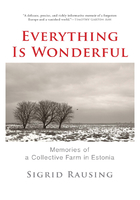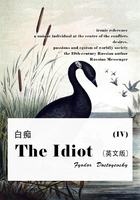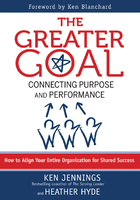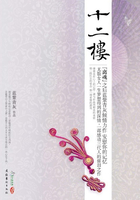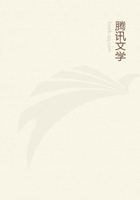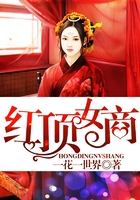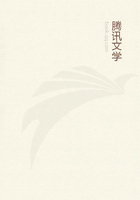A Survival Guide
Each of us faces a moment of truth when we have a chance to take a risk for something larger than ourselves. Sometimes the knock at our door asking us to stand up, get involved, speak out, take leadership, do something is so faint we miss it. Other times we hear the knock but aren't sure how to respond. Is it really for me? Am I the right person? Won't someone else step forward?
Stand Up! is a guide to answering the knock at your door asking you to join other people to change the world. It's about finding your life's purpose in social change. The principles and practices in the book will help you solve local problems in your community and participate in confronting the greatest challenges facing our society. Stand Up! explains what each of us needs to know—and be able to do—to survive and thrive in a world that feels like it's spinning out of control. This introduction condenses the main points of the book, beginning with a story that illustrates the connection between standing up and survival.
The knock at Mario Sepulveda's door was unmistakable. It came as a deafening explosion of falling rocks. On August 5, 2010, Mario was operating a front-end loader, deep in a one-hundred-year-old copper mine in Northern Chile. After years of neglect—which had led to scores of workers losing limbs and lives—the mine finally collapsed, trapping Mario and thirty-two other miners two thousand feet underground.
In the minutes that followed the collapse, some men ran to a small reinforced shelter near the bottom of the mine. Without thinking ahead, they broke into an emergency food supply cabinet and began eating the meager supply of food meant to keep two dozen miners fed for just two days. Other miners went searching for their comrades. Once the mine settled, a small group, including Mario, explored narrow passageways looking fruitlessly for a way out. The shift supervisor took off his white hard hat and told the others that he was no longer their boss. Now they were all in charge.
Amid the fear and confusion, Mario began organizing the other miners. He'd seen the massive slab of rock blocking their escape. Later, he told Héctor Tobar, author of Deep Down Dark: The Untold Stories of 33 Men Buried in a Chilean Mine, and the Miracle That Set Them Free, “At that moment I put death in my head and decided I would live with it.”[1] Mario told the men (women weren't allowed to work in the mine) that they might be underground for weeks. They needed to ration their cookies and condensed milk. Once they accounted for all thirty-three miners, he reminded them that that number was the age at which Jesus was crucified, a sign that they were meant to live. He encouraged them to organize daily prayer meetings, which brought the men closer and helped them overcome the frictions of being buried alive with little hope of rescue.
Mario was not alone in taking leadership. One of the most important actions that he and the shift supervisor took was to give every man a role—from setting up lighting to mimic day and night, to carting water and caring for the sick. The men organized daily meetings where they debated and voted on life-and-death decisions about rationing their food and organizing their living space. Above ground, their mothers, sisters and wives organized to put pressure on the Chilean government, which dragged its feet before mounting a full-scale rescue. The miners' survival was a team effort.
Yet Mario's decision to stand up on the first day likely saved his own and the other men's lives. By carefully rationing their meager supply of food, they were able to survive for weeks on daily crumbs. As important, by organizing themselves, they preserved their humanity. They sustained the belief that they would ultimately escape their underground tomb. When some men gave up hope, others pushed them to keep fighting to stay alive.
Few of us will experience the extreme deprivation faced by the Chilean miners during their sixty-nine days underground. Yet the challenges they overcame—finding a way to share scarce resources, keeping hope alive despite repeated setbacks, not lashing out at the people around them—are similar to those we grapple with in our own lives. And, like the miners, we all ultimately depend on one another for our survival.
Humans can be shortsighted and cruel. Like the men who ripped open packets of cookies they'd need for weeks, we act without thinking through the consequences. We put the mighty dollar above the value of human life—allowing people to work in a death trap to keep profits flowing. We allow problems to fester, prejudice to divide us from people whose fate we share. Yet at our best we're social beings wired to work together to solve problems. We feel in our bones the need to look out for one another. As Pope Francis has said, “For all our limitations, gestures of generosity, solidarity and care cannot but well up within us, since we were made for love.”[2]
Martin Luther King, Jr. captured this tension in our humanity in his sermon on Luke 11:5–13. A man knocks at his neighbor's door at midnight asking for three loaves of bread. The man wants the bread to feed a hungry traveler who's arrived at his home. The neighbor with the bread says, “The door is already locked, and my children and I are in bed. I can't get up and give you anything (Luke 11:7).” When it's clear that the man seeking the bread won't stop knocking, the neighbor relents. King says that midnight is a time of despair. The traveler is seeking not just the sustenance of bread but the hope that dawn will come.[3] Like us, the characters in the parable are interdependent. But they must still choose whether to respond or to retreat. The hungry traveler brings to the surface a battle between selfishness and solidarity, which simmers inside all our hearts and comes to a boil at moments of crisis.
A Guide to Surviving a World on Fire
Today, in one way or another, our lives are being made less secure by three interconnected crises—growing economic inequality, hardening racism, and accelerating climate change. These are the equivalent of the falling rocks and darkness that put the Chilean miners to the test. Like the mine collapse, the changes that are pulling our society and planet apart are not simply the result of unfortunate accidents. They flow from decades of disinvestment from people and communities. They are the result of intentional political decisions that have pitted us against each other and concentrated wealth and power in the hands of a small number of people at the expense of our safety and well-being.
Just as the miners had to face the reality that there was no simple way out of the mine (one of the many safety violations found was the lack of ladders for miners to climb up ventilation shafts), we need to recognize that conditions are not going to get better by themselves. No one is coming to save us. There'll be no hero on a white horse. There is no app, no high-tech solution. All we have to fall back on is one another, our human capacity to organize ourselves to create a better society. As with Mario Sepulveda and the three men in the parable, the first choice that each of us must make at this moment of truth is whether to engage in the world or retreat into our private lives. On this question hinges the quality of our lives and the future of humanity.
All we have to fall back on is one another, our human capacity to organize ourselves to create a better society.
In their book Hillbilly Nationalists, Urban Race Rebels, and Black Power: Community Organizing in Radical Times, Amy Sonnie and James Tracy tell a story about Jean Tepperman, who at eighteen years old attended the famous 1963 March on Washington for Jobs and Freedom. Years later—after a lifetime spent organizing—Jean remembered that she hesitated for a moment when a speaker asked people to take a step forward if they were willing to commit their lives to the struggle for racial justice. “Could she really make that promise? She recall[ed] the color and texture of the pavement under her feet as she paused, then stepped forward.”[4]
Stepping into social change—for a moment or a lifetime—is never simple. It's hard to give up on the idea that we can take care of things by ourselves, without making waves or being vulnerable to other people. Many of us, especially men, have been taught that living a good life means being self-sufficient, that we should aim for control and accept our fate. But if we're smart, we learn to depend on other people—not just family and friends but strangers. We grow as humans by trusting others and feeling the love that follows. We're like a driver stuck on the median as cars whiz by. We must put our life in other people's hands to make our way forward in the world. That's why Mario had to face his own mortality and dependence on his brother miners before he could lead.
Once we decide to stand up and speak out, we're entering a world of wolves, of powerful forces that want us to keep quiet or disappear. They will not give up their privilege without a fight. We need to bring all the wisdom we have about how to make change. We cannot rely on good intentions or use Band-Aids to treat the symptoms but not the sickness. We need to bring people who are on the sidelines into public life so we have enough people power to win. We need organizations and movements with leverage to negotiate changes in the laws and policies that shape our lives. We need to be able to govern the communities, states, and countries in which we live. That political work can be aided by technology. But it succeeds only if it's rooted in the kind of face-to-face relationships that have sustained every social movement in history.
We cannot rely on good intentions or use Band-Aids to treat the symptoms but not the sickness.
The primary point of this book is that we have all the power we need to create a just and fair society. People who profit off misery tell us to suck it up: “This is just the way it is. You can't fight city hall. Your voice is irrelevant.” What those in power are telling us is a lie, no truer than the idea that some people are worth more than others. There is almost nothing we cannot change—if we choose to get involved, if we open our hearts to others, if we see that this isn't about helping another person but about our own liberation, if we don't try to do it alone, if we learn from those who've risked their lives to fight oppression, if we have the courage to confront people in power even when we're uncertain or scared.
Beyond Cynicism
To shift the balance of power in our society, many more people need to let go of the idea that nothing can be done or that they have nothing to offer. When we hesitate to engage in politics as more than dissatisfied voters, we end up handing our power to those who are already powerful. We live in a society that tells us that we're on our own, even as a small number of corporate executives exercise outsized control over our lives. Over the past forty years, the people who run the largest companies in the world have succeeded in depressing wages for most workers, increasing profits, and shrinking government as a safety net in hard times. These changes have caused great suffering and shorter life spans.[5] They've also cut us adrift from each other. We distrust not only big institutions but also one another and ourselves. We seek community but doubt it exists. We want our voices to be heard but question if anything can change. We hear how money has corrupted politics, but that just reinforces our disgust with the system.
I wrote this book as a tool to help interrupt this cycle of cynicism. I want to demystify social change so that we see it as something that we're all meant to do as humans. We have to view our engagement with the world—with all its problems—as how we live out our purpose in life. When we organize, we act as our best selves. We experience being an agent of change rather than an object of someone else's imagination. We overcome division and despair. We solve problems that need not exist. This is about more than just being good people. It's about our survival. In a society where wealth is ever more concentrated and the planet is at risk, opting out is not an option. If we don't act now, our lives and those of our children and their children will be immeasurably diminished. It will become increasingly hard to afford higher education, find stable work, and walk the streets without fear of violence.
Ella Baker—the organizing conscience of the civil rights movement—said about her work. “My basic sense of it has always been to get people to understand that in the long run they themselves are the only protection they have against violence and injustice.” That means nurturing people's capacity to lead their own organizations. As she said, “Strong people do not need strong leaders.”[6]
Stand Up! offers a tested step-by-step framework for becoming an effective social-change leader and building better organizations. It's designed to motivate more people to dive in and take greater risks. It's a call to experience the power and purpose that comes from joining other people to create a world in which we can all belong and thrive. If you are already involved in social change, the book is meant to help deepen your commitment—to answer the question, How do I make a life out of this justice work and bring others with me?
Five Conversations That Can Change the World—and Our Lives
Stand Up! is structured around five conversations that can help people build and lead powerful organizations. Our capacity to talk with one another is the most reliable tool we have for changing the world. We all know the difference between a lecture and a conversation. When we talk at people rather than with them, most people will take a pass. Some may show up again or respond to the action we asked them to take, but their commitment is unlikely to grow. Any results will probably be short-lived. We need to engage in dialogue with people if we want to see them develop into leaders or to build organizations that can persist against powerful foes.
Our capacity to talk with one another is the most reliable tool we have for changing the world.
Conversations take time and can be difficult. They're powerful because they create a “pool of shared meaning” that makes it possible for people to think together.[7] The choices we make about strategy and tactics are better when they stem from dialogue. People feel a sense of ownership and responsibility for them. Social change boils down to building durable human relationships that make it possible for large numbers of people to act with power and purpose—which is why Stand Up! is structured around conversations.
First Conversation: Purpose—Preparing Emotionally for the Fight of Your Life
The first conversation is with our own hearts to reflect on our purpose in the world. Why am I here on this earth? And what will I leave behind? For many of us, this is a conversation we have with God: What do you ask of me? What lessons should I take from the suffering and grace that I've experienced in my life? For others, this conversation is about wrestling with the meaning of our lives and the difference we want to make in the world.
The starting place for all social change is internal transformation. The process of opening our life up to the world—of finding our place in a larger movement for change—is mysterious. It requires shedding layers of stories we were told growing up about how we're supposed to behave and what our proper place is in society based on our gender, skin color, religion, sexual orientation, or nationality. We realize the truth of what is happening in the world and what is expected of us in fits and starts. We have an experience that causes us pain or embarrassment. We feel a sense of personal power that we don't want to go away. We hear something from someone we love or respect that captures our imagination. Someone pushes us to stand up for something. We react emotionally to a situation and find ourselves involved in a fight that we thought had nothing to do with us.
Oppression persists because people who benefit from it are willing to fight so hard to keep their privileged position in an unjust order. Organizing against injustice requires emotional strength to steel us for a long road filled with disappointment and delay. We need to be clear about what we value enough to struggle for. Commitment that comes from clarity of purpose is the most powerful resource we have against determined enemies. Nelson Mandela brought tears to our eyes when he walked out of prison in 1990 after twenty-seven years, on his own two feet. We witnessed a man who had the fortitude to never give in and never give up. When we're clear about our purpose, and who stands behind us, there is almost nothing we cannot accomplish. We're ready to build a movement.
Second Conversation: Story—Building Relationships That Move People to Action
The next step, the second conversation, is sharing our story with another person and hearing his or hers. Stories are the basic building block of social change. Our stories capture the unique set of experiences, people, and beliefs that have shaped our lives. They're how we explain our values and emotional commitments to other people—and how we connect our lives to theirs and to history. When I hear your story, I see you. When we find something in common in our stories—which we always do, no matter how different we may seem—it creates the emotional connection we need to begin walking together on a path to justice.
Because stories are how we make sense of the world, they're the best way to persuade people to look at things differently. We read a book or hear a speech, and years later the one thing we remember is the nugget of a story. People who take time to reflect on the experiences that have shaped their lives and crystalize those experiences into emotionally powerful stories are able to persuade and motivate people to do almost anything. Fr. Jesus Nieto, a Catholic priest in Oakland and a clergy leader in Faith in Action, tells of coming from Mexico to the United States packed tightly with two other people in the trunk of a car. He emigrated in order to reunite with his father. That image of a boy, who would grow up to be a parish priest, struggling to breathe in a car trunk is powerful. It puts us in an emotional space, and tells us what we need to know, to engage in a serious conversation about making US immigration policy more humane.
Third Conversation: Team—Finding a Home Base in a Movement for Change
The third conversation is with a team of sisters and brothers we can work with to change the world. Social change is a team sport, carried out alongside people whom we trust with our lives. The best way to stay on the wagon of justice is to be part of a group that meets regularly. What we can get done in the world, and the personal transformation we experience along the way, hinges on the quality of the conversations we have with people we're working with daily to create change. Small groups that build trust and a shared focus have driven social change through history. They make it possible for people to sit down at segregated lunch counters and occupy policed streets with impunity and refuse to be moved. In contrast, large organizations without smaller spaces tend to treat people as cogs working in a larger wheel rather than agents of social change.
It takes hard work and honesty to make social justice teams work. Small groups succeed when they create shared norms, build trust through frank conversations, adopt ambitious goals, create clear roles for people, and make important decisions together. With these ingredients, it's possible to organize large numbers of teams that can function effectively without depending on lots of paid staff. Within groups, people can follow a process of sharing stories, reflecting on text, and acting together that helps teams both get things done and be transformative for their members.
Fourth Conversation: Base—Recruiting a Following You Need to Lead
The fourth conversation is with a base of people—in schools, neighborhoods, congregations, workplaces, and social networks—who make us leaders and hold us accountable. Millions of people are waiting to be invited to create a better world. I began this book by saying that each of us has to make a deeply personal decision about whether, and how, to engage in the world. I used the image of a knock at our door as a metaphor for that choice of whether to stand up or pull back in a crisis. If you're this far into Stand Up! I want to be clear that it's not enough to answer the door; you need to go out and knock on another person's door. When we decide to engage in social change, we're saying yes to the messy work of organizing other people. To go back to King's sermon, the protagonist in Luke 11:5–13 is neither the midnight traveler nor the reluctant neighbor. It's the person courageous enough to knock on another person's door at midnight and ask for social sustenance. It doesn't matter if no one answers or if the door gets slammed in our face. The question is whether we have the fortitude—like Nelson Mandela—to keep going until we find someone willing to join in.
The key variable in the mathematics of social change is the number of people we invite to participate. When people are asked to volunteer or contribute to a cause by a friend or neighbor, they tend to respond at surprisingly high rates. When I hear people explain how they first got involved in an organization, they almost always begin their story with someone they knew, or a person sent by someone they knew, coming to talk to them. It seems too simple, but the surest way to get people off the sidelines and into the fray is to ask them directly, especially if the person doing the asking is known to them. Flyers and Facebook posts don't cut it. People need to hear that someone they trust wants them at the table.
Fifth Conversation: Power—Winning Social Change
The fifth conversation is with the powers that be to unmask who is benefiting from the pain we see in the community and in society and who has the ability to relieve it and then to begin negotiating change. This conversation helps us begin to figure out how much power we need to overcome the interests that are holding injustice in place. We're talking about direct, face-to-face contact that engages our senses—allowing us to see, hear, touch, and smell the people who are making the decisions that shape our lives.
This visceral contact is not always easy to make happen (although it is often less difficult than we think), but it's essential. It gives us a taste of power. People realize their influence in the world by experiencing their ability to make change, not by being told they are powerful. Engaging with people who lead institutions and systems helps strip away the layers of deference that lead us to hand over our lives, and those of our loved ones, to people with aims other than our well-being. It also forces us to be brutally honest about how politics works.
Most people—especially those who have long experienced being told by others what to do at work and in their lives—have doubts about their power. Organizing changes that. Faith in Action has years of research showing that the more people participate in face-to-face meetings with mayors, city council members, bank executives, and other decision makers, the more they find their own voices as leaders. They are more likely to attend future meetings, accept bigger roles in organizations, and feel more of a sense of agency.[8] In contrast, when people attend a rally or big meeting, it can help an organization show its strength and get results, but it doesn't necessarily translate into their continuing to participate, chairing a meeting, or feeling like they have the ability to make changes in their community or society.
Local organizing that directly engages powerful institutions in our communities is valuable not only because it addresses some of the most important decisions that shape our lives and gives us experience with politics but also because it creates precedent and momentum for larger-scale victories. We need to build campaigns and movements from the ground up. At the base of the pyramid are local efforts through which people work together for changes that they can see and feel in their lives. At the next level are bigger campaigns to change public policies in cities or states. At the top are large-scale movements that seek to fundamentally reshape the rules and culture of the society, like abolishing slavery, ending child labor, and providing health care for all. These changes reshape the flow of the river. They can take decades and generations to make happen—but they begin with people wading into the water in their own communities.[9]
These five conversations—with yourself, other people, your team, your base, and the powers that be—will help you figure out what a larger movement for change needs from you personally. They show you how to be a leader with a following, engage other people, build and sustain organizations and movements, and take action that turns the impossible into the possible and the possible into the inevitable.
Each conversation has a different purpose. Each takes place with different people at distinct moments in a cycle of building an organization. Each involves a different emotional orientation. Together, they make it possible to spin a web of relationships strong enough to confront the people who are feeding off injustice. The five conversations—and the principles and practices embedded in them—can serve as cornerstones of a lifelong commitment to social justice.
The primary audience for Stand Up! is people who are frustrated by what they see happening in the world and want to get more involved in change. The book also has a message for people who lead community, labor, and other social justice organizations. It's an argument that we need to redesign the architecture of social change in the United States. The organizations that should be our tools for building better lives expect too little of us. Too often they act as if we live in a postracial society. They skate on the surface rather than engage in real talk about race, gender, class, and identity that is necessary to build trust so people can work together across differences. They ignore our spirituality and our search for purpose and belonging, mistakenly imagining that wanting more money or the stuff it buys is the only thing that motivates us. Too many organizations assume that taking “action” online or making a small donation is the most that can be asked of people facing disaster. That leaves too many of us clapping or booing from the sidelines. We need organizations that ask us to bring our whole selves to the table; that see us as ends, not means; that are organized around members searching for meaning rather than issues searching for support. With that in mind, here's how the book is organized.
Structure of the Book
Chapter 1 tells a short story that summarizes how the fiveconversation framework in Stand Up! can be used to protect the people and things we care most about. Chapter 2 explains how inequality works; who's profiting from it; why the crises of hyperinequality, racial exclusion, and climate change matter to all our lives; and what we can do about them. This is the context of a world on fire, which makes answering the knock at the door for social change and organizing so important at this moment. Chapter 3 shows why wrestling with our purpose is a first step to becoming effective leaders for change. This chapter is designed both to help us deepen our personal commitment to social change and to build organizations around which people can build their lives. Chapter 4 is about story, how we get clear about our unique story, use storytelling to build organizations rooted in strong relationships, and organize to tell new stories that pave the way for greater racial and economic justice. Chapter 5 focuses on finding and sustaining a team that we can work with to change the world. Chapter 6 explains the conversations we can use to build a base of people to whom we're accountable, which is the fundamental work of bringing more and more people into social change. Chapter 7 is about engaging the powers that be. It's a guide to winning fights, big and small, and building a movement to reverse the inequality and racism in American society. It includes a discussion of organizing strategy and tactics and examples of (mostly successful) campaigns. The conclusion discusses ways to apply the ideas and practices in the book to your life and work.
注释:
[1] Héctor Tobar, Deep Down Dark: The Untold Stories of 33 Men Buried Alive in a Chilean Mine, and the Miracle That Set Them Free (New York: Farrar, Straus and Giroux, 2014), 58.
[2] Pope Francis, Laudato Si': On Care for Our Common Home, encyclical letter, The Holy See, May 24, 2015, 41.
[3] Martin Luther King, Jr., Strength to Love, spec. ed. (Minneapolis: Fortress Press, 2010), 58.
[4] Amy Sonnie and James Tracy, Hillbilly Nationalists, Urban Race Rebels, and Black Power: Community Organizing in Radical Times (New York: Melville House, 2011), 26–27.
[5] Olga Khazan, “Why Are So Many Americans Dying Young?” Atlantic, December 13, 2016.
[6] Charles Payne, I've Got the Light of Freedom: The Organizing Tradition and the Mississippi Freedom Struggle (Berkeley: University of California Press, 1995), 93.
[7] Patterson et al., Crucial Conversations: Tools for Talking When Stakes Are High, 2nd ed. (New York: McGraw-Hill, 2011).
[8] Brian D. Christens, “Tips on Building a Broad Base of Engaged and Empowered Volunteers,” Center for Nonprofits, University of Wisconsin–Madison, Fall 2011,
[9]Thank you to Joy Cushman for this framework.

